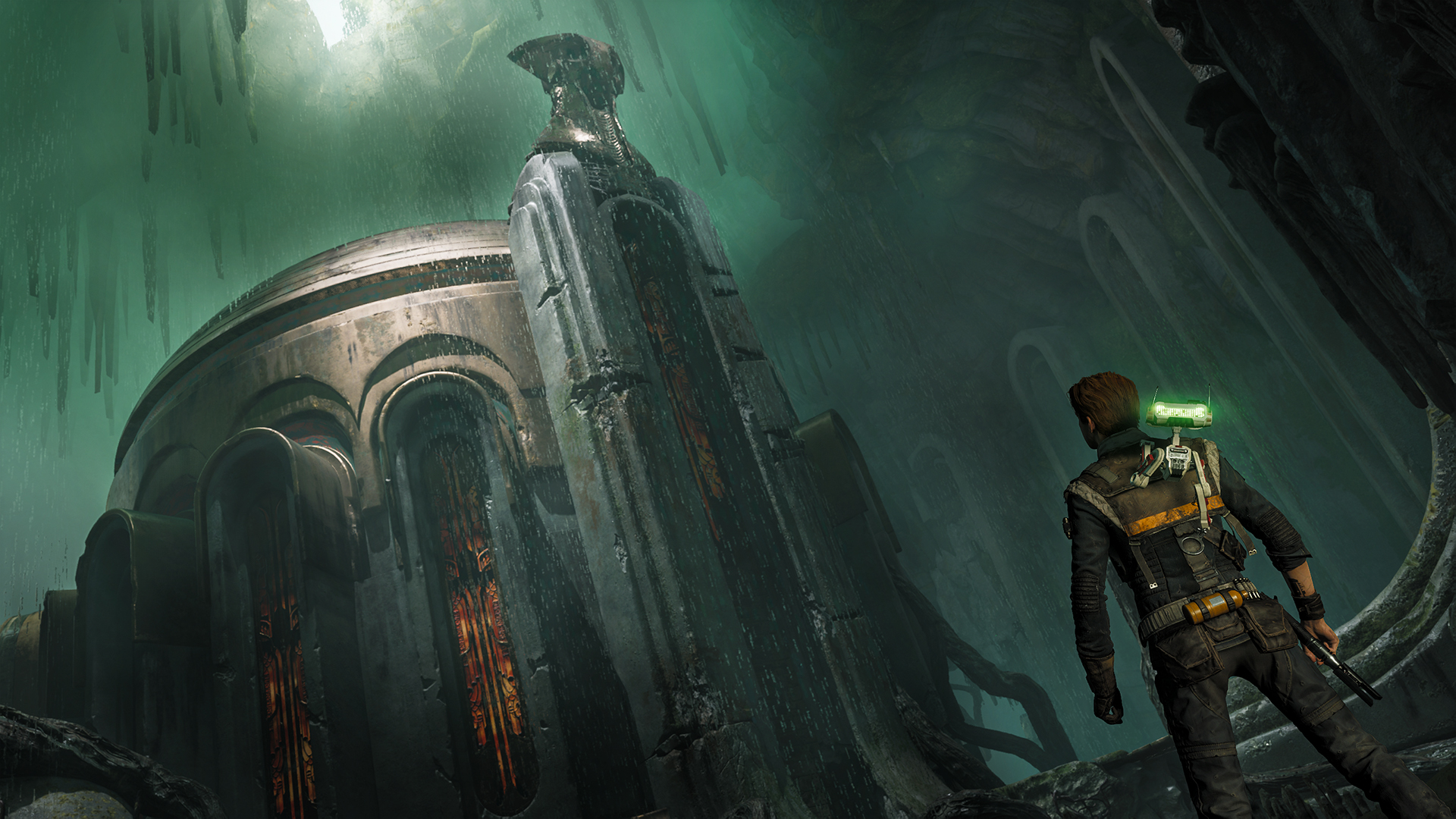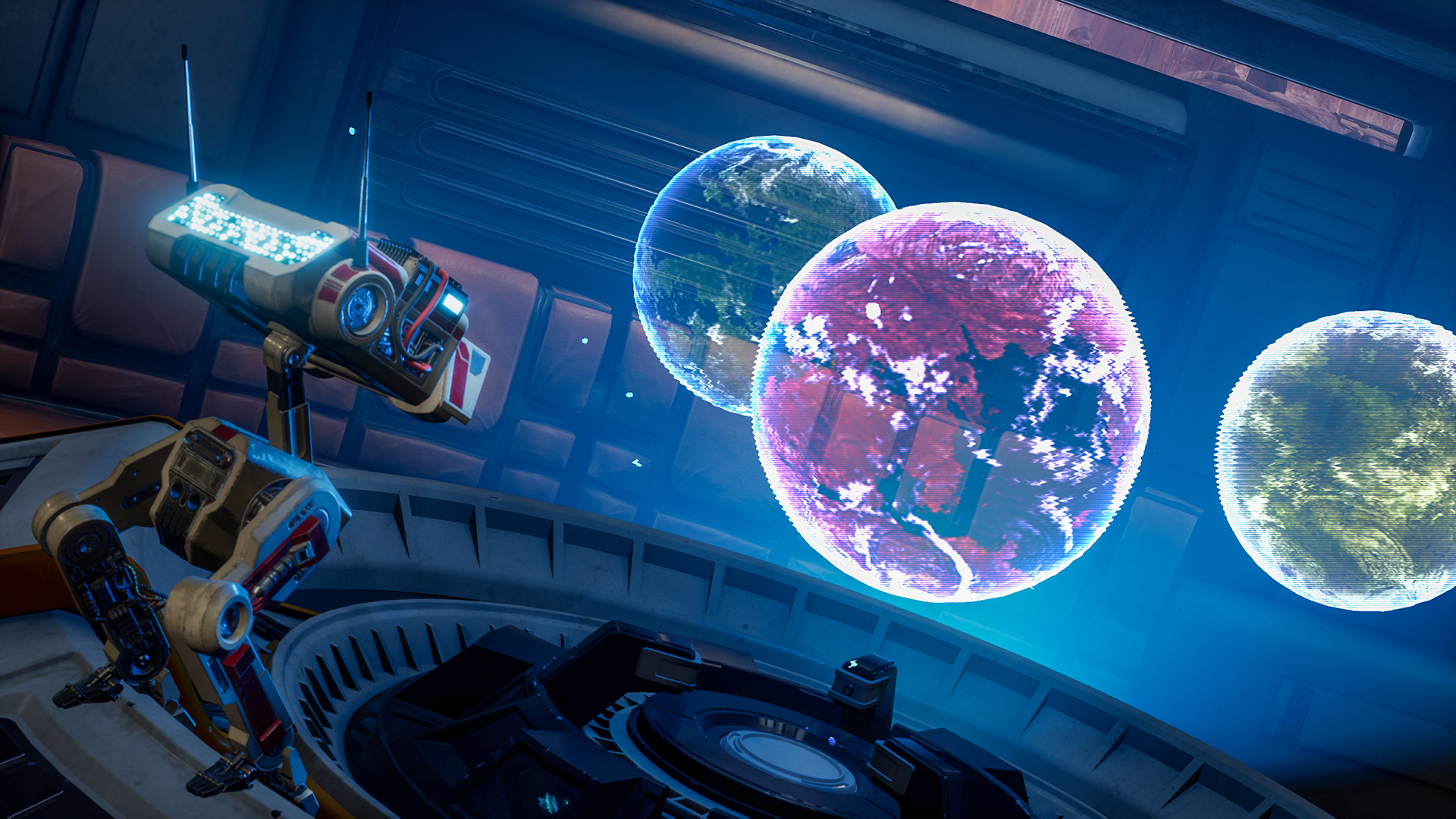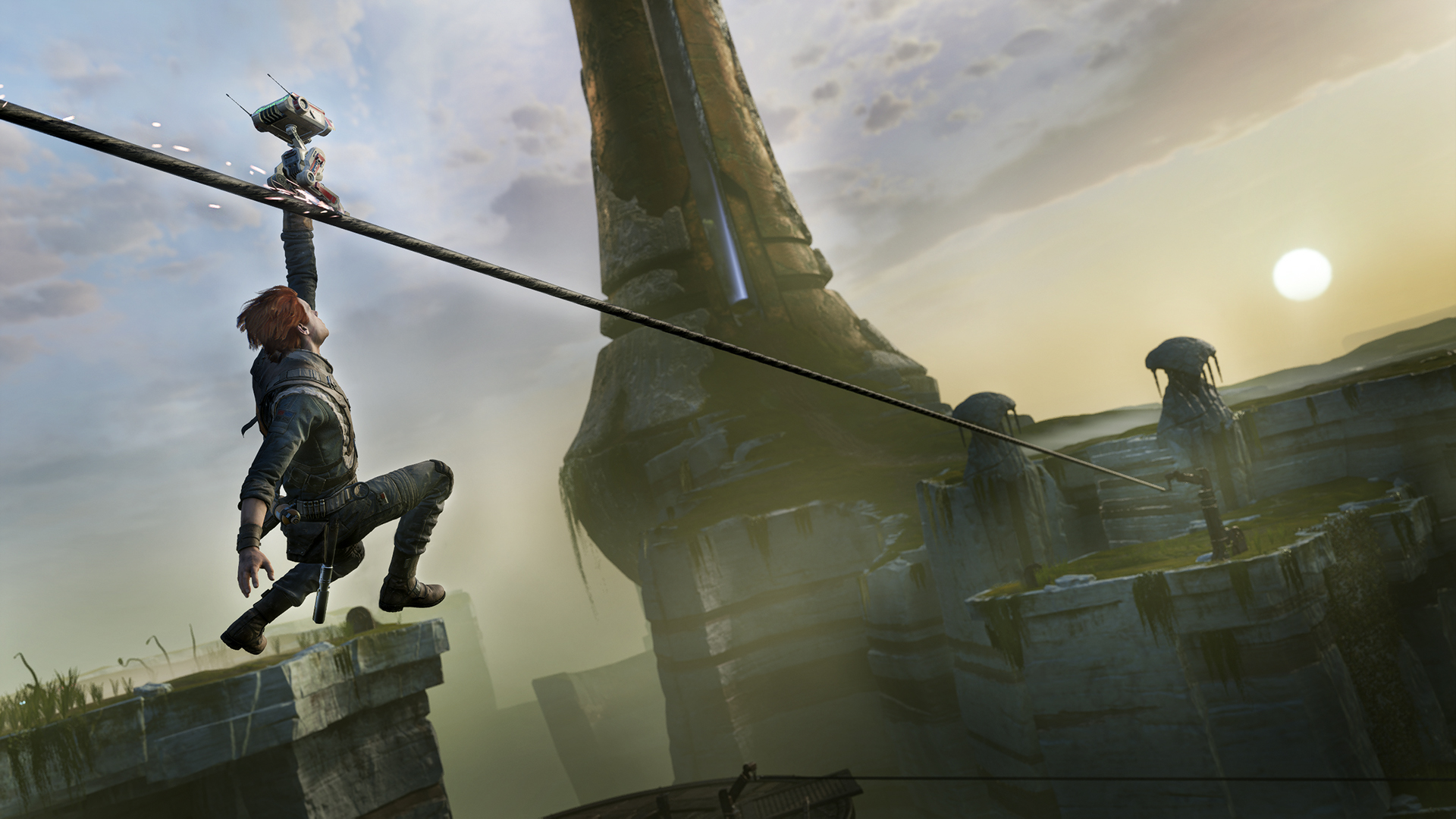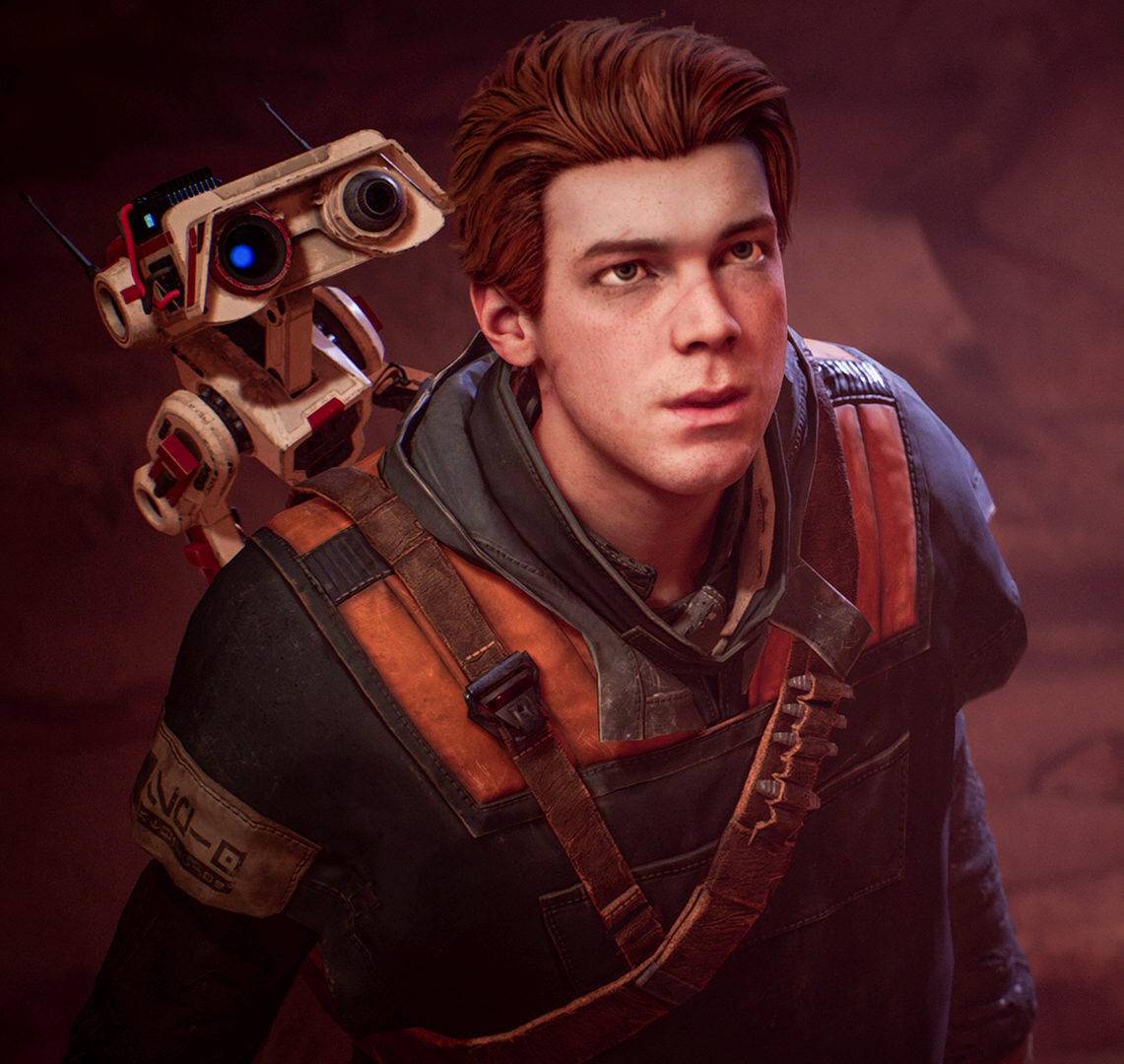Star Wars games have a fantasy problem. For decades, each time a new project is announced, the marketing blitz places heavy emphasis on the fact that the game will allow players to live out some particular fantasy from the films. Become an intergalactic bounty hunter. Step into the boots of a starfighter pilot. Or, most commonly, be a Jedi. But this idea of capturing a power fantasy in gameplay is vague and, as the Force Unleashed series showed, prone to exaggeration to the point of absurdity. Saying you want to recreate the feeling of being a Jedi through battles and amped-up Force powers is like skipping straight to the end of a complicated math problem—it ignores a bunch of important steps and is liable to lead you to the wrong answer.
I do not doubt that Star Wars Jedi: Fallen Order, the soon-to-be-released action-adventure game from Respawn Entertainment, was motivated in part by a desire to recreate the Jedi power fantasy. And it may well succeed in that goal with its story of Cal Kestis, a young Padawan on the run from the ascendant Galactic Empire. After going hands on with the game for a few hours, I’m impressed with the way Cal feels powerful yet grounded and vulnerable during combat, and the few narrative beats I got to see were promising enough. But my preview convinced me that Respawn has nailed something rarer and, to my mind, more important than just fantasy: the underlying creative process that made Star Wars such a beloved, successful piece of pop culture in the first place.

Given how influential George Lucas’s creation has been in the three decades since the first movie hit theaters, it’s easy to think of Star Wars as sui generis, as this phenomenon that sprung fully formed from its creator’s head. But very few of the individual elements of the universe are in any way original. I’m not just talking about what Lucas took from Western mythology or Eastern philosophy, or his reverence for Joseph Campbell and the monomyth. Lucas borrowed much more literally from an extensive set of 20th century media, allowing him to build upon the past successes and interesting ideas of others. Famously, the movie draws on the structure and story of Akira Kurosawa’s The Hidden Fortress, with C-3PO and R2-D2 standing in for the Japanese film’s bumbling peasants. And much of the tone of Star Wars comes courtesy of prewar adventure serials. More specifically, it’s believed that Darth Vader and the Stormtroopers stem in large part from The Fighting Devil Dogs, a 1938 serial featuring a villain called The Lightning, who wears a Vadereseque black mask and cape and led a squad of white-clad goons. Even all this is just scratching the surface. Lucas’s inspirations were so numerous that there’s an entire Wikipedia article dedicated to cataloguing them all.
Which brings us back to Jedi: Fallen Order. Plenty of coverage of the game has focused on the similarities between the push-and-pull rhythm of its lightsaber combat and FromSoftware’s Sekiro: Shadows Die Twice. Both games see you trading blows with stronger enemies, trying to block, dodge, and parry incoming attacks. Your own blows whittle down their stamina meters until you break their guard for a chance to deal real damage. Given the timing of Sekiro’s release, this is unquestionably a case of independent invention. When I asked the game’s combat designer, Jason de Heras, about the coincidence, he said it was “interesting to see how you could be in two different time frames and come to that conclusion” and noted that much of the inspiration for the combat system actually came from fighting games. (De Heras previously played competitive Street Fighter.) But there’s little doubt in my mind that Respawn’s work was inspired in part by the same games that inspired Sekiro, From’s own Demon’s Souls and Dark Souls series.
Like the From games, Fallen Order features spots around the map where you can rest, upgrade Cal’s abilities with any skill points you may have earned, and refill both your health and the number of uses of your healing items. In another similarity, resting will reset enemies in the world around you, causing Stormtroopers and other creatures you’ve defeated to reappear. These locations also serve as checkpoints you return to upon death. You’ll lose any XP you’ve earned since the last skill point you unlocked, though you can get it back by returning to the enemy that killed you and dealing a single hit of damage—a close but more forgiving take on From’s approach.

Unlike the Souls games, however, Jedi: Fallen Order isn’t one large, interconnected map, but a series of smaller (though still interwoven) areas on different worlds. It wouldn’t be a Star Wars adventure without a little planet hopping. Cal travels between these worlds in a ship called the Mantis, accompanied by a human woman, Cere, and a four-armed alien pilot, Greez. At different points in the story, you’ll be able to pick between multiple planets on the ship’s galactic map, and you’re free to revisit older locations to unlock new areas and secrets, so the progression isn’t strictly linear. Structurally and mechanically, then, there’s a touch of Mass Effect.
I was particularly struck by how seamlessly this process played out. When I used the galactic map to select a new planet, I fully expected to have control taken away. Instead, Greez took the Mantis up off the surface, out of the atmosphere, and into hyperspace, all while I was free to walk around the cabin and watch out of the front viewport. When we neared our destination, Greez told me I had to sit in the co-pilot’s seat to land, but this transition was handled by a cutscene showing our arrival, not a load. Even a flashback that put me in control of a young Cal in training happened with an instantaneous jump cut. I suspect that if you didn’t die while playing you’d never encounter a single loading screen once you were in gameplay, though neither de Heras or producer Blair Brown could confirm that directly in our interview. It’s an aspect I think George Lucas would appreciate, given his obsession with scene transitions.
The two planets I had a chance to explore—a new world called Zeffo, once home to an ancient civilization of the same name, and Dathomir, which previously appeared in The Clone Wars—offered a few additional elements that reminded me of the Souls series. There were doors I could attempt to open, only to be informed that they were locked from the other side. Once I’d made progress, I could open these doors or kick down a rope to gain access to a shortcut for return visits. And when, at the end of Zeffo, I took down an AT-ST in a fairly straightforward boss fight, a message appeared in the top center of the screen informing me I had defeated it.

But I recognized plenty of concepts from other series on Zeffo, as well. I saw Metroid in the way certain sections of the map were locked off by obstacles I could not overcome until I found additional powers. Tomb Raider and Uncharted in the platforming, climbing, rope-swinging, and slope-sliding segments. The Legend of Zelda: Breath of the Wild in the puzzles in the Zeffo temple that required me to use physics and my Force abilities to push orbs into sockets on the ground. Perhaps unsurprisingly, I saw Respawn’s Titanfall games in the specific feel of the wall-running and -jumping mechanics. If the myth-making of Star Wars relied on George Lucas pulling from a wide variety of influences, both Japanese and Western, then Fallen Order strikes me as the same approach reinterpreted as game design.
I realize that may sound like a backhanded compliment, but I promise you it’s not intended as one. Modern games are full of technical and design solutions that have been done before, and most titles in any genre draw on the same small pool of tropes. What made Star Wars brilliant and enduring is that Lucas took his myriad inspirations and fashioned them into something genuinely great in itself. Calling a work of art derivative is only really an argument if that’s the one notable thing about it. If you blatantly crib from one source, you’re a hack and a plagiarist. If you can crib from dozens, appropriate their best qualities, and make it all into one cohesive whole, you might be a genius.
Viewed one way, Star Wars is one of the most derivative properties ever to break through to the mainstream. But its specific combination of pre-existing elements proved so potent that the original trilogy reshaped an entire genre for at least a generation, changed the lives of millions of fans, and spawned imitators that have gone on to become influential in their own right. Within gaming alone, it’s a safe bet we wouldn’t have Halo or Mass Effect without Star Wars. From that vantage, how much does it truly matter that Lucas borrowed a few things along the way?

Based on what I’ve played so far, Jedi: Fallen Order doesn’t really feel like a Metroid game with lightsabers, or an Uncharted game where Nathan Drake can use the Force. The closest parallel it draws, perhaps, is to FromSoftware’s work, but the more adventure-minded gameplay elements and the focus on polished, cinematic storytelling have kept it from feeling purely like Jedi Souls. The concepts Respawn has mimicked from other games, whether intentionally or not, mean that Fallen Order should be accessible and comprehensible to a wide audience, packed with some of the most effective design ideas in gaming today. So far, that mix looks to be executed at a high standard, and in a ratio that doesn’t feel entirely like anything else.
Still, I remain uncertain about a few key aspects of the game. I’m not entirely sold on backtracking through levels—even with the detailed 3D minimap I could call up at any time, I found myself going in circles at least twice when trying to navigate back to my ship on Zeffo. I also haven’t fully internalized the pacing of combat, so the cadence of trading blows and blocking still felt a bit awkward at times. (Then again, so did Sekiro at first.) Finally, I’m a bit skeptical about shoving yet another original story into the gaps of the current Star Wars canon when the broad strokes of the saga have made it difficult to establish real stakes or surprises.
But no matter how the final game shapes up, I’m still struck but how well Respawn’s creative philosophy suits the source material. Building a game about Star Wars with the same vision that first gave us Star Wars is far more fitting than shoving the Force and some X-Wings into a single narrow design template or trying to somehow reinvent the wheel, and that’s reason enough for me to be hopeful. Like a young Padawan being forced to drill somewhere in the depths of the Jedi Temple, Fallen Order certainly has potential.
Header image credit: EA
